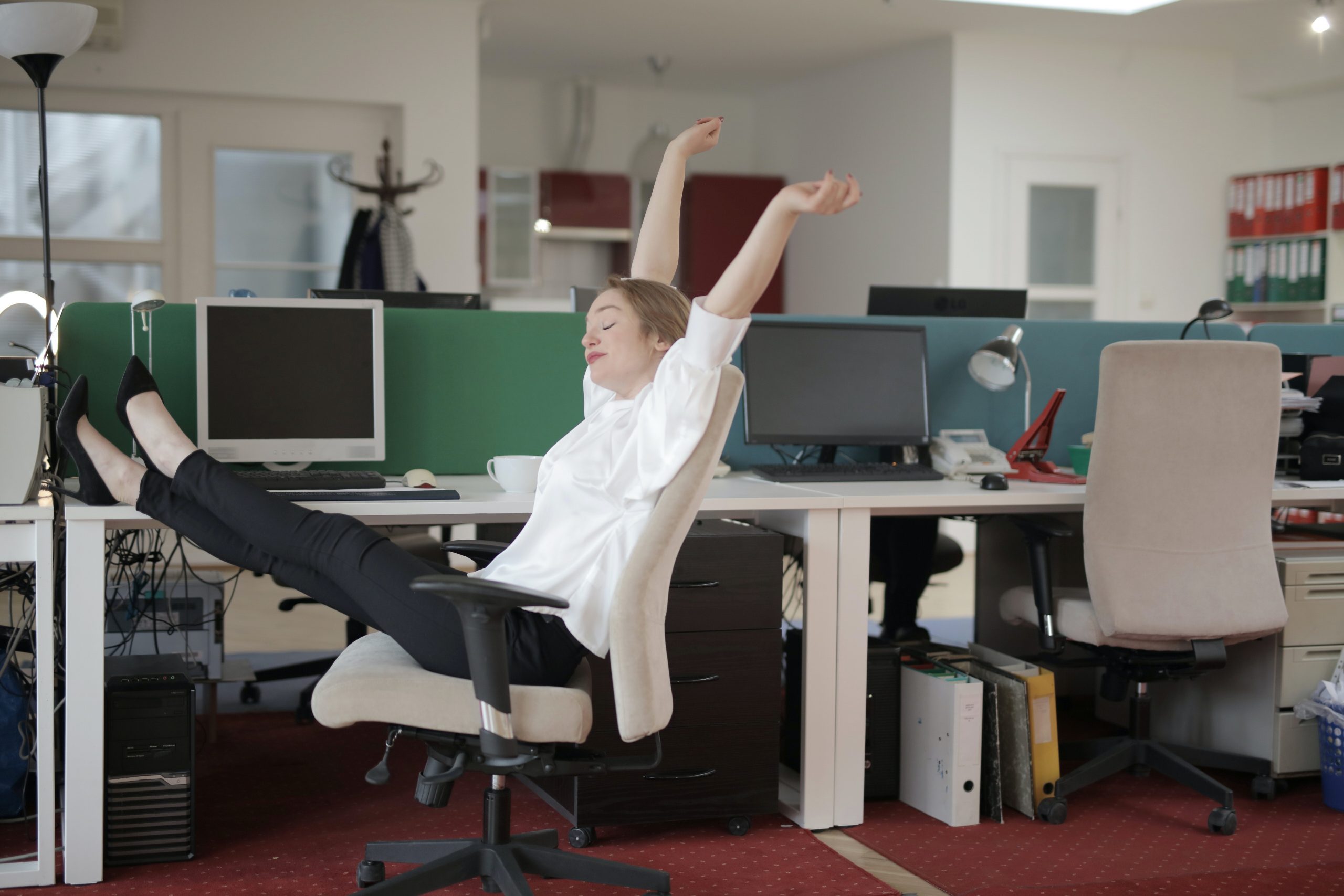
Keeping active in the office: The simple steps you can take
With almost 70% of us living in Sydney’s north shore working full time[1], it has never been more important to prioritise our health and wellbeing. Having a good work life balance is important, however it is so easy to feel chained to your desk during the day. There are some simple things that you can do throughout the day to get moving and keep your body ready to face the real work once you’re home.
You might get a few sideways looks if you start lunging your way to the bathroom through the hallway, but if that’s your style don’t let us cramp it! Something a little more subtle might be the way to go to keep your body moving throughout the day, and these can be very effective in not only minimising but also preventing the onset of pain.
Stretching
The most common areas of pain caused by office work is in the shoulders, upper and lower back, hands, and fingers. There are many simple stretches that you can do throughout the day to avoid muscle pain and soreness. The following graphic gives some great examples of easy exercises you can do in the office.
In 2018, around 29% of Australian’s (7 million!) reported experiencing pain through some form of musculoskeletal condition[2], with forms of arthritis accounting for over half of those. Spending hours a day typing away and slouching in your cheapo office chair certainly contribute to these ailments.
The majority of us sit in a chair whilst working, and while rather practical it can cause some real issues for your back and neck. Sitting for long periods at a time has been linked with some negative long-term health effects, including an increased risk of conditions like diabetes, obesity and cardiovascular disease[3]. It can also increase muscle tightness in places such as your hip flexors and hamstrings, which can in turn impact your posture, balance and walking gait. Besides exercises and stretching, there are some changes you can make to your work environment that may also assist in activating certain muscles and keeping them moving.
You might see some co-workers replacing their chairs with exercise balls. While this can assist with increasing core strength and stability, as soon as you relax your posture will be affected and as such can be the cause of more aches and pains. A more effective method in preventing soreness is simply standing and walking around. Instead of sending an email or memo to a co-worker, walk over to them if you can. Grab a glass of water from the kitchen, or even just do a lap around the office. Every time you can get up and go for a walk, it is helping your body naturally stretch out and relax muscles. Moving around for 5 minutes every 45-60 minutes will greatly assist in reducing the aches and pains of prolonged periods of sitting.
It is also becoming commonplace these days to have sit-stand desks available to office workers. While neither sitting nor standing for long periods will be beneficial, combining the two over the course of a day will help keep your body moving. Other ideas to increase your movement during the day include –
- Take the stairs when you can
- Have walking or standing meetings
- Move away from your desk for lunch
- Do simple exercises while waiting, i.e. calf raises at the photocopier
Putting some or all of these tips into practice can help you prevent muscle aches and soreness throughout the day. However if you have aches and pains that just won’t go away, the team at Lane Cove Physio can expertly assist with their tailored physiotherapy treatments and programs.
Give us a call on (02) 9428 5772 or book online for your consultation today and begin your journey to a pain free life.
[1] Australian Bureau of Statistics. (2016). 2016 Census QuickStats: North Shore. Retrieved from Australian Bureau of Statistics: https://quickstats.censusdata.abs.gov.au/census_services/getproduct/census/2016/quickstat/SED10060
[2] Australian Institute of Health and Welfare. (2019, August). Arthritis. Retrieved from Australian Institute of Health and Welfare: https://www.aihw.gov.au/reports/chronic-musculoskeletal-conditions/arthritis-snapshot/contents/arthritis
[3] Harvard Medical School. (n.d.). The dangers of sitting. Retrieved from Harvard Health Publishing: https://www.health.harvard.edu/pain/the-dangers-of-sitting



